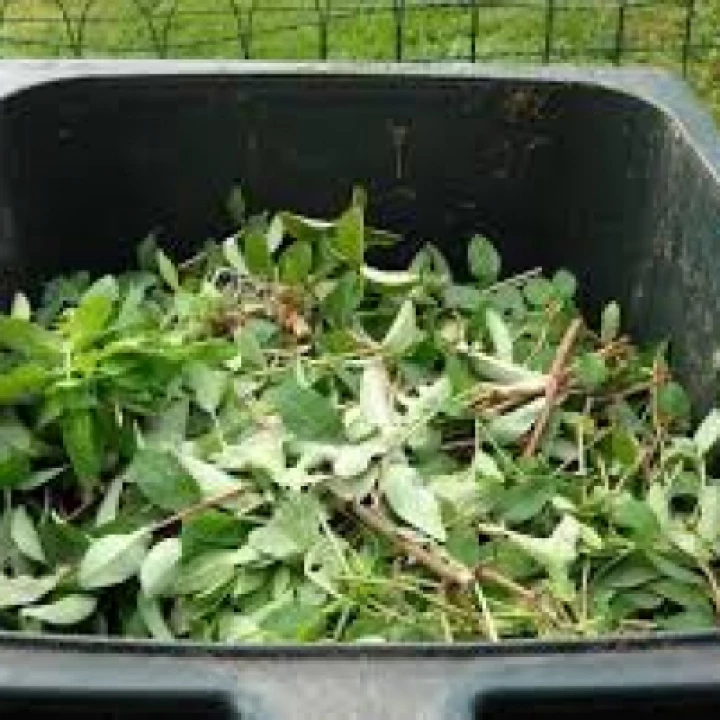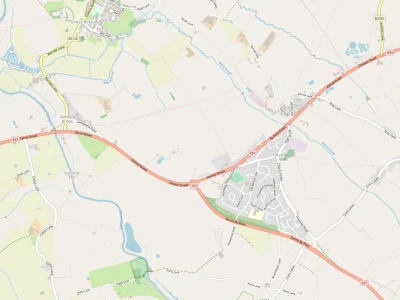Five surveys have taken place from January to May 2021.
You may already be aware that a small group of woodland volunteers go out each month to record the bird species (but not the numbers of the birds) that are seen or heard in the three parts of the woodland – and also seen over-flying the woodland and its adjacent areas. The results are interesting. For instance, during the three and a half years during which the survey has so far been conducted, around 50 different species of bird have been recorded. This article will focus on just the five surveys undertaken during 2021, during which time, birds of 39 of those species have been seen or heard in or from our woodland Of these 39 species, there are about 17 which could be described as "ever presents", with the birds being seen or heard during every one of the surveys. On average, we have recorded 27 species each month this year, an increase on the approximately 24/25 species of a couple of years ago.
There are a number of success stories to report.
* Nuthatches are seen and heard (a lot!) during every survey. Careful attention during a slow and quiet walk between Broomheath Lane and Townfield Lane should enable you to see them. As a result of our nest box surveys, we have the evidence of two pairs nesting in our bird boxes each year.
* We can now claim to have a resident population of Goldcrests, because they are seen regularly during surveys, with seldom a month missed. For the first time this year, they are to be found at both ends of the original woodland, which leads to the question as to whether the wilding area has been playing a part in their apparent increase? It is a possibility but it is far too early for us to attempt to draw firm conclusions.
* There are Greater Spotted Woodpeckers that use our woodland. They have been seen at the Austins Hill end of the Saxon Heath section, at Hockenhull Lane and at the top end at Townfield Lane. They are very shy and, consequently, noise or other disturbance (either human or canine) is likely to frighten them away, making them harder to spot.
* The section behind the Saxon Heath estate between Broomheath Lane and Austins Hill now has quite dense growth, especially in places on the A51 side. It is here that Black Caps and Whitethroats are present. It is quite an achievement to have this happen so soon after the woodland's establishment.
The infrequently-seen birds include the hawks. While we might spot a Buzzard in perhaps 5 months out of 6, it is very seldom that we have seen a Kestrel – possibly on just 1 occasion out of the 6. And Peregrine Falcons have been seen only twice in the whole 3½ years! Tree creepers are also very occasional sightings. This may be because of their excellent camouflage – and, although we suspect that they are in the woodland, they have been seen only once since the start of 2021. Coal tits have been equally elusive, although we have the strong feeling that they ought to have been there. Some species are so infrequent that their solitary appearance has been remarkable in itself – a Great White Egret has been spotted on just one occasion in 3½ years, and similarly a Garden Warbler has had only one sighting during the five months so far this year.
The birds that are missing but ought to be with us surely do deserve a mention. Surprisingly, we have rarely seen Pied Wagtails this year , although we feel that they ought now to be (and have previously been) present. The same has been true this year of Fieldfares. There are also total absences of some birds which we are led to believe should be present in a woodland such as ours. However, we have NEVER had any evidence of Bullfinches, Bramblings, Redstarts or Flycatchers, which is disappointing.
There is always consolation to be found and this comes from our true "residents", – the birds that are always with us. Some of these are birds which you might also frequently see in your garden, but others are truly woodland birds. It is from this list that the subjects for our occasional articles are taken. Thus far, we have written about the Great Tit, the Blue Tit and the Long-tailed Tit, the Nuthatch and the Goldcrest. Our future articles will feature (but not in any particular order) the Chiffchaff, Chaffinch, Jackdaw, Magpie, Wood Pigeon, Collared Dove, Jay, Carrion Crow, Song Thrush, Mistle Thrush, Dunnock, Wren, Blackbird, Robin, Starling and House Sparrow (yes – we get House Sparrows in the woodland as well!)
The A51 Tarvin Bypass was completed in 1984 and Tarvin Parish Council was issued with a Gardening Licence for the land that is now our woodland in 1997. So, it is less than 40 years ago that the land was open fields with very few species of birds to be seen – a part of what, for ornithologists, was a green desert. That we now have so many 'resident' birds; that so many species have made our woodland their home, is a real success story in itself. Ours may be an amenity woodland – and we have certainly seen many Tarvin folk using that amenity during the past 15 difficult months – but the Trustees' objective, "... to conserve, restore and re-establish native trees, plants and all types of native wildlife ...." is also gradually being realised. Developing a woodland may actually be the task of several lifetimes but it is clearly evident that, bit by bit, we are getting there. With a long-term project, that is always good to know!
Quick Links
Get In Touch
TarvinOnline is powered by our active community.
Please send us your news and views.








